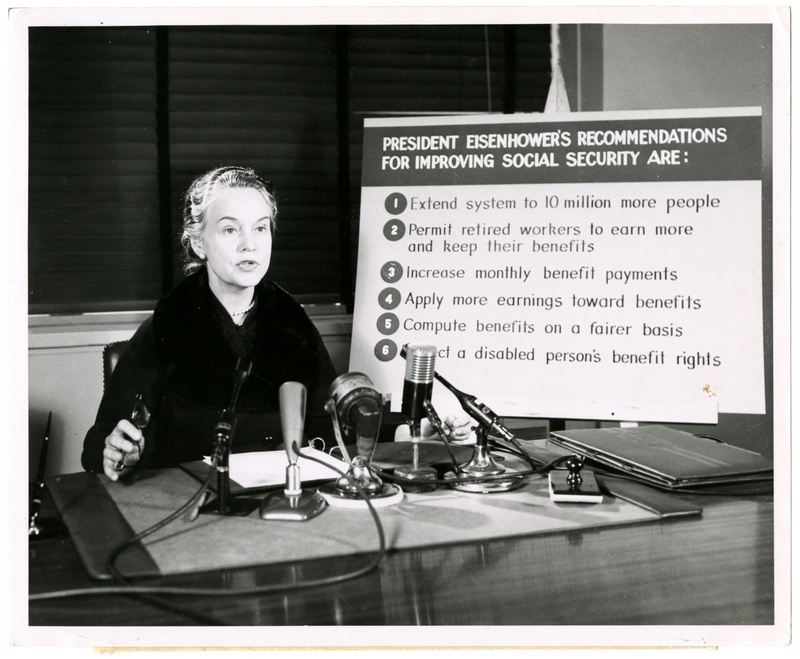Welfare
Oveta Culp Hobby was now on the cusp of a long-lasting debate between welfare and social security. In an important history Social security had been introduced into the government as the Social Security Act of 1935, but there was still great debate over the approach.1 Labor organizations, organizations for the aged, and socialist partners advocated for increases in social security coverage in bills that would become today’s Medicare and Medicaid. Against the increased coverage were the American Medical Association, insurance associations, and the Chamber of Commerce, believing the expansions to be “socialized medicine.”2 Going into governmental office, Oveta believed that there could be too much security from the government that could destroy self-reliance and initiative, and that there needed to be more local participation in welfare.3 “‘[She took] as a guideline to promote the general welfare rather than to provide for the general welfare.”4 Her political ideology influenced her work as she took a conservative approach to government involvement in social security, a policy originally aimed to solve the problem of destitution among the aged and dependent parties so that they could support themselves and their family.
However, with advocates of social security and proponents for government protection of dependent populations, Oveta and her team, including Wilbur Cohen, an avid proponent of Social Security, did copious research and pushed for the expansion of Social Security.5 Her viewpoint switched to seeing expansions of Social Security as a social insurance program, one that would make dependent persons more self-reliant so that they would become productive people of society rather than a program that would just give out government welfare (Figure 1).6 In her last year as the Secretary, over 10 million more people had been added to Social Security. Benefits increased for those in the program and the vocational rehabilitation program was also expanded to help those who were disabled. The Office of Health, Education, and Welfare also expanded the Old Age and Survivors insurance program.
At the end of her term as the Secretary, she had been convinced and was convincing other people through many speech releases about the benefits of expanding government-supported and government-funded social security. As her approach to social security evolved, so did the conversation about social security and insurance. As government involvement in security of the public increased, it led to even more debate about insurance programs and how to approach them, especially for healthcare insurance programs such as Medicare and Medicaid.
